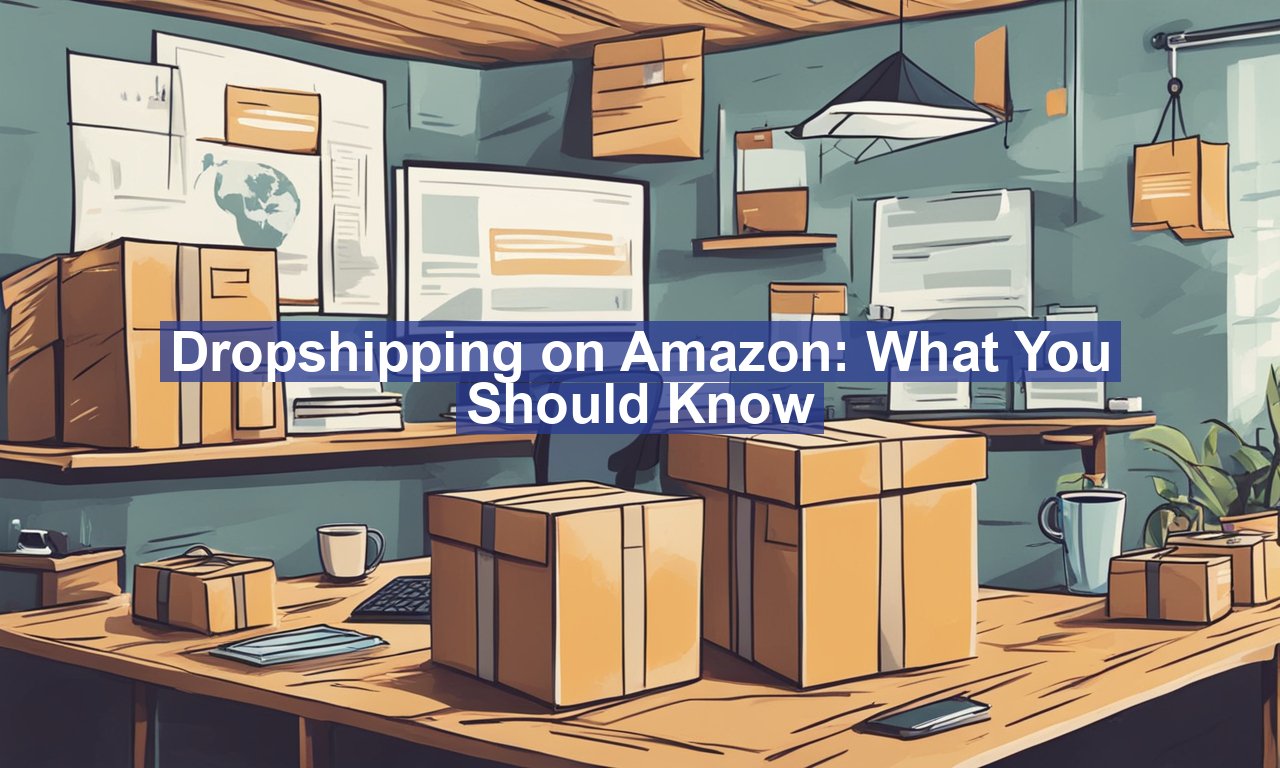Dropshipping on Amazon: What you should know, imagine being able to run a fully functioning online business without ever having to handle the inventory yourself. That’s the allure of dropshipping on Amazon. With over 300 million active customers, Amazon provides an enormous potential market for products, making it an attractive platform for drop shippers. However, diving into Amazon dropshipping demands a nuanced understanding of its policies, pros, cons, and strategies for success. Let’s break down everything you need to know about dropshipping on Amazon to launch a successful and scalable business.
What is Dropshipping?
Dropshipping is a retail fulfillment method where an online store doesn’t keep the products it sells in stock. Instead, when a store sells a product, it purchases the item from a third-party supplier who then ships it directly to the customer. This business model allows entrepreneurs to focus on marketing and customer service rather than inventory management.
Key Advantages of Dropshipping
– **Low Startup Costs**: You don’t need to invest in inventory upfront.
– **Flexibility**: Manage your business from anywhere.
– **Scalable**: Easily add new products to your store without significant overhead.
However, the real magic happens when you apply this business model to Amazon.
How Does Dropshipping Work on Amazon?
On Amazon, you list products for sale, but unlike other e-commerce platforms, Amazon has stringent rules that sellers must follow.
Amazon’s Dropshipping Policy
Amazon explicitly states that dropshipping is allowed only if you comply with specific requirements:
- You must be the seller of record for your products.
- You must identify yourself as the seller on packing slips, invoices, and other information included with the product.
- You must remove any packing slips, invoices, or external information identifying the third-party drop shipper.
- ### The Operational Workflow1. **Product Listing**: Search for popular products or niches with good profit margins and list them on your Amazon store.
2. **Receiving Orders**: Once a customer makes a purchase, you’ll need to head to the supplier’s site, place an order, and provide the customer’s shipping address.
3. **Supplier Ships Product**: The supplier then ships the product directly to your customer.
4. **Customer Service**: Handle returns and customer inquiries as the seller of record.Finding Reliable Suppliers
One of the biggest challenges in dropshipping is finding reliable suppliers. You can use platforms like AliExpress, Oberlo, or SaleHoo to source products. However, not all suppliers are created equal:
– **Research thoroughly**: Read reviews and verify the reliability of suppliers.
– **Test Orders**: Place test orders to evaluate product quality and shipping times.Profit Margins and Costs
Understanding your profit margins is crucial for a successful dropshipping business. Here are some costs to consider:
- Cost of Goods Sold (COGS): The price at which you purchase products from suppliers.
- Amazon Fees: Amazon charges various fees including referral fees, closing fees, and fulfillment fees which can compound based on the category.
- Advertising Costs: Optionally, you may want to invest in Amazon PPC (Pay-Per-Click) advertising to boost your listings.
- Use these figures to calculate your pricing strategy, ensuring you can offer competitive prices while maintaining a healthy profit margin.
Best Practices for Success
Here are some tried-and-tested strategies to maximize your dropshipping success on Amazon:
Product Research
Use tools like Jungle Scout or Helium 10 to identify high-demand products with lower competition.
Quality Customer Service
Amazon prioritizes customer satisfaction. Ensure timely responses to queries and efficient handling of returns to maintain high seller ratings.
Compliance with Amazon Policies
Follow Amazon’s guidelines meticulously to avoid account suspension. This includes ensuring that your packaging and shipping practices conform to Amazon’s standards. You can read more about Amazon’s detailed policies on their official help page.
Avoiding Common Mistakes
Some pitfalls can derail your dropshipping business:
Overrelying on a Single Supplier
Diversify your suppliers to mitigate the risk of supply chain disruptions.
Ignoring Customer Feedback
Customer reviews can offer invaluable insights into product quality and potential areas for improvement.
Conclusion
Dropshipping on Amazon: What you should know presents a lucrative opportunity if approached correctly. The low upfront costs, flexibility, and scalability make it an attractive option for entrepreneurs. However, the journey is not without its challenges. From understanding Amazon’s policies to finding reliable suppliers and managing costs, the path to success requires careful planning and execution. Equip yourself with the right knowledge, tools, and strategies, and you’ll be well on your way to building a successful dropshipping business on Amazon.
To deepen your understanding of dropshipping strategies, consider exploring this comprehensive guide.


